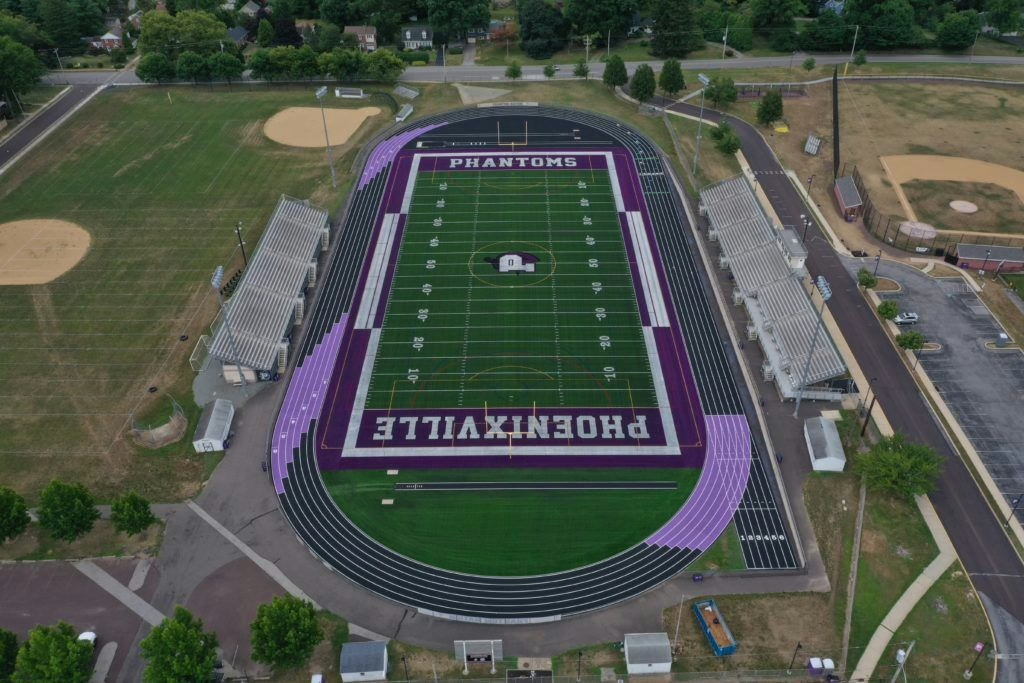Common Turf Maintenance Mistakes and How to Avoid Them
Read More

On the road to superior surface performance and player safety, there are a myriad of important design and build decisions to consider. In this overview, we explore popular design choices and a range of variables that contribute to guest enjoyment, playability, and the aesthetic appeal of modern turf football fields.
An easy way to determine the best turf type begins with an athletic evaluation. In general, if your field is primarily used for practice and/or games for casual teams, an artificial turf football field installation that features enhanced shock absorption for added player safety should be the top priority. Alternatively, if your football field will be primarily used for competitive, high-level football games and tournaments, investing in a professional-grade turf system that provides faster performance may be the best solution for your field.
Fortunately, if your athletic needs fall somewhere in between casual and professional-level play, there are a range of mid-tier turf systems that offer the perfect balance of surface stability and impact safety. The best mid-tier systems feature multiple shock layers, resilient and grippy grass fibers, and durable backings that can withstand heavy-duty use without failing.
Modern turf systems come with a wide range of grass choices. You can now choose between various grass weights (fiber density), lengths, shapes of fibers, and even colors! Other optional additions, such as choosing a grass style with added UV resistance, are another smart choice if you are building an outdoor field.
As you explore the best grass options for your facility, consider both performance and aesthetic goals. A longer, thicker grass will look and feel more like natural grass while simultaneously improving durability, although a thicker/longer artificial grass reduces ball speed and foot push-off and may not be the best option if you are designing a highly competitive field. A shorter, thinner grass will look less natural and provide less cushioning, but it may be the better option for your facility if you want professional-grade surface conditions and faster ball action.
After choosing a grass that aligns with your athletic goals, consideration for related elements such as fan seating, concessions, and other facility features will help you determine the best field placement and arrangement. While considering placement and arrangement, consider additional field requirements such as lighting, security fencing, and any other add-ons that may affect the final facility composition.
Integrating logos and field striping can transform the look and appeal of your artificial turf in New Jersey. Paired with a bright and attractive turf color, a professional striping update enhances both player performance and fan visibility.
After adding a logo and vivid striping to your football field, we also recommend adding fan-safety netting to key areas along the perimeter. Most popularly, our football field contractors provide safety netting behind the goalposts, in front of seating areas, and in other critical areas like the concession or parking lots. For practice and travel needs, we also carry a protective selection of portable netting solutions that are easily adapted to on-the-go athletic goals.
Other finishing touches, such as installing a scoreboard and harmonizing your stadium with an appropriate theme, should also be considered. Inlaid logos that represent your team’s colors can go a long way in providing a welcoming and memorable football experience.
This is only a glimpse of the value-adding design considerations we can help you integrate. As a professional design-build company, we offer turn-key assistance with all phases of the process. From the initial design and permit acquisition stages to the stylish finishing touches like striping and safety netting, our organized support equals stress-free project management from start to finish.